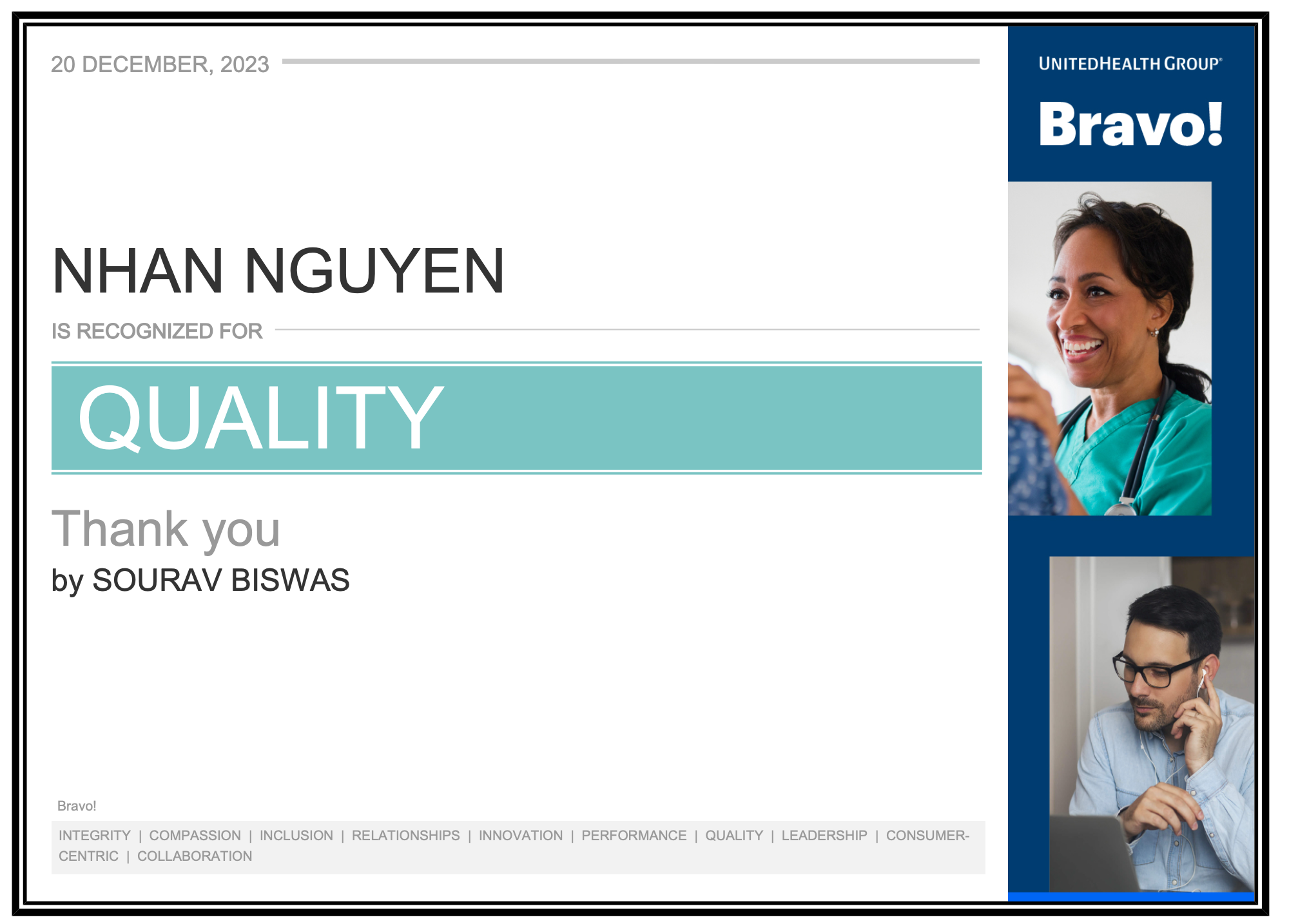
Performance Award
12/20/2023
Experienced Full Stack Software Engineer with extensive expertise in designing, developing, and maintaining software solutions. Eager to contribute hands-on technical skills in a dynamic environment while driving innovation and delivering value to groundbreaking projects.
Technologies:
• Languages: Java, Javascript
• Web technologies: Spring Boot, REST API, GraphQL, Angular, Node.js
• Database: SQL Server, MySQL, Postgres
• Distributed system: Apache Kafka
• Version control: Git

12/20/2023
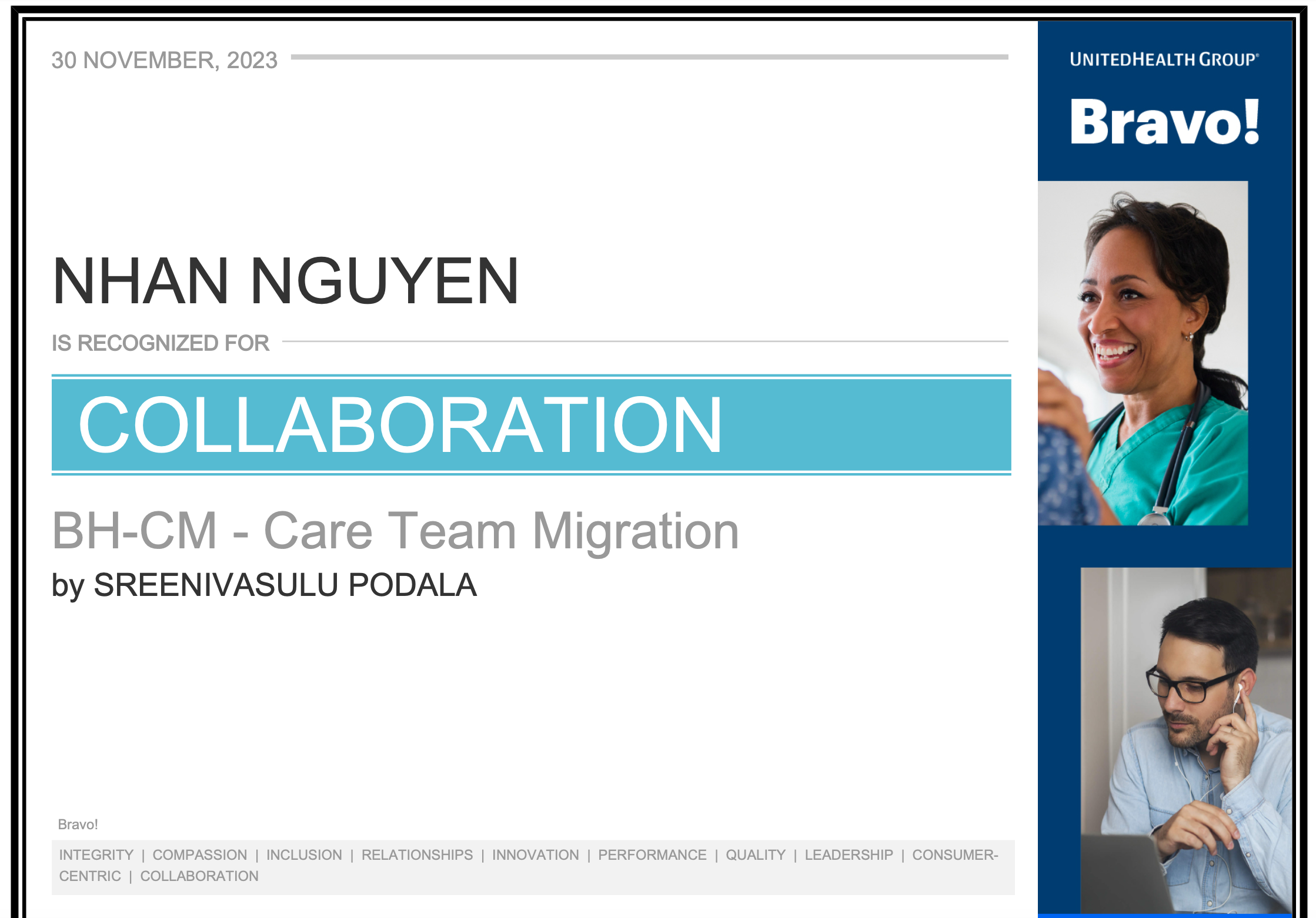
11/30/2023

09/13/2023
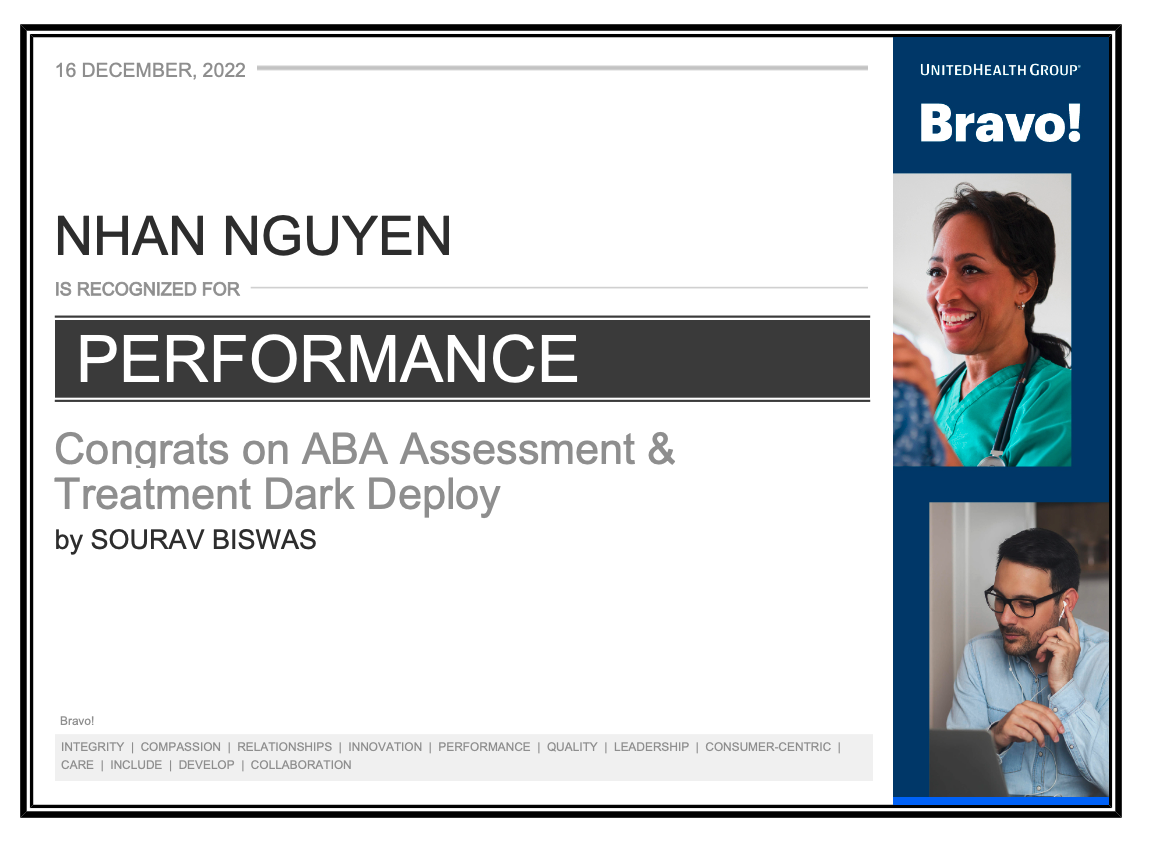
12/16/2022
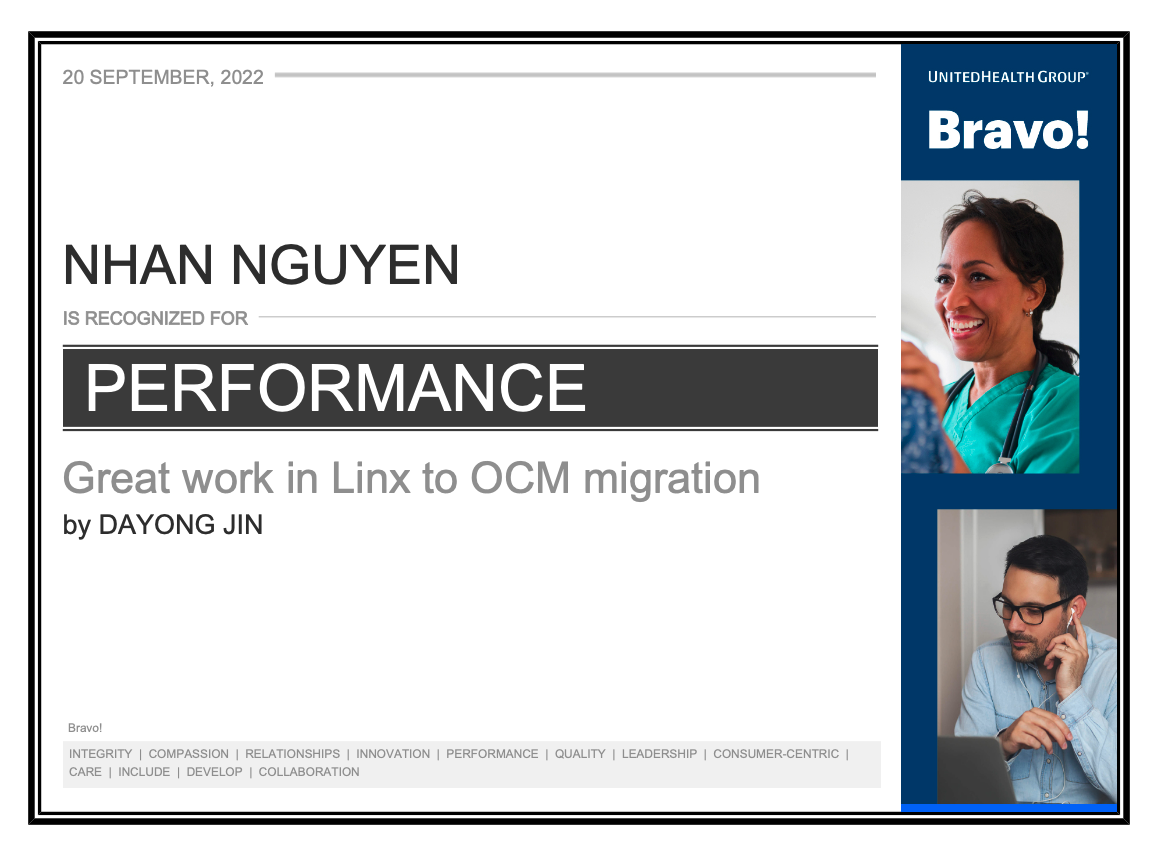
09/20/2022

The "Make IT Happen" award is an annual recognition program that identifies leaders who have demonstrated exceptional performance, making significant contributions to the achievement of Optum's technology priorities.
During the year 2022, I had the honor of being chosen as one of the 2,700 nominees, thanks to my role in a dedicated team responsible for the modernization of the utilization process. Our principal goal was to extract data from a legacy system and transform it into the FHIR format. Additionally, we introduced a distributed Kafka system to ensure fault tolerance and streamline data processing. Finally, we effectively implemented a mechanism for approval or denial by the Care Advocate Teams.
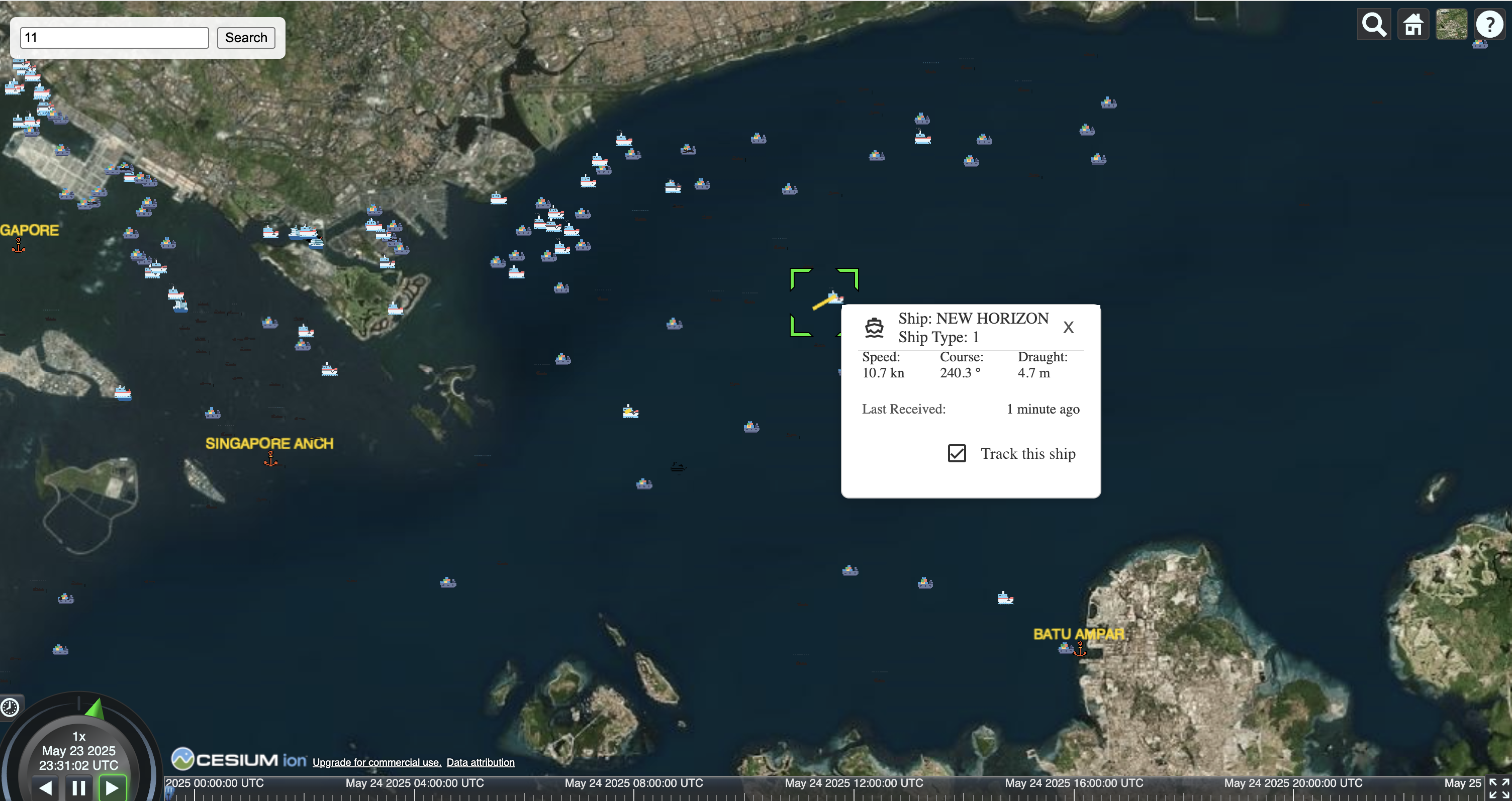
This hobby project visualizes maritime vessel movements in Southeast Asia using real-time AIS data. The backend, built with Spring Boot, reads live data from AISStream.io via sockets and publishes it to Apache Kafka topics using Avro for schema management. A Kafka Streams topology joins two key data streams — static ship information and dynamic position reports — to generate comprehensive vessel movement data.
On the frontend, Angular and CesiumJS are used to render 3D visualizations of ship trajectories on a virtual globe. The frontend establishes a STOMP WebSocket connection to the backend to receive processed vessel movement data from Kafka Streams in real time. Due to the cost of cloud deployment (e.g., EC2), the application currently runs with mock data to simulate live activity.
A local demo of the full system is available upon request.
Technologies used: Java Spring Boot, Angular, Cesium.js, Kafka, KafkaStream, and Web Socket

A hobby project designed to fetch Two-Line Element (TLE) data periodically from Celestrak, propagate satellite orbits using Orekit, and visualize them in a 3D interactive environment. The system leverages Java Spring Boot for backend services, Angular for frontend development, and Cesium.js for 3D visualization of satellite trajectories.
Data persistence is handled using PostgreSQL, while AWS EC2 ensures seamless hosting and scalability. This project combines advanced astrodynamics computations with modern web technologies to create an engaging and educational tool for satellite orbit analysis.
Technologies used: Java Spring Boot, Angular, Cesium.js, Orekit, AWS EC2, and PostgresDB

A web-based circuit simulator emulation as a hobby project, showcasing a subset of core features through local replication for interactive demonstrations and educational purposes.
Technologies used: React.js
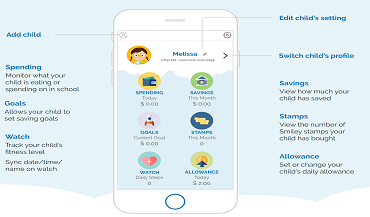
A mobile application for parents to set allowance for their children at school. This application integrates with the DBS Bank and the Network for Electronic Transfers (NETS) to handle the One Time Pin (OTP) and money transfer. At the end of the day, the parents can view children steps, meal purchased, …
The app is available for donwload on Android and iOS
Technologies used: Node.js, AngularJS, MongoDB, Redis, SQL Server
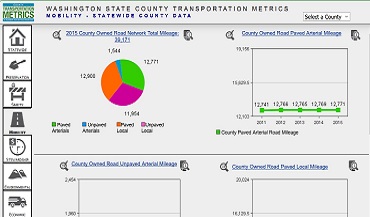
A graphical web-based dashboard of county transportation performance measures.
Technologies used: ColdFusion, SQL Server, HTML5, CSS3, jQuery
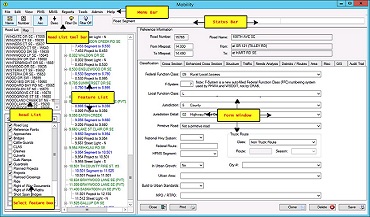
An inventory management system for county road infrastructures: horizontal curves, vertical curves, clear zone segment, etc.
Technologies used: .Net, ADO.Net data service, SQL Server, GIS
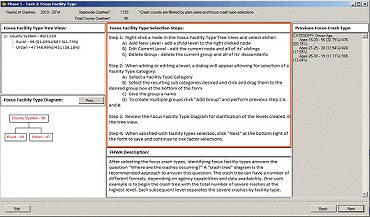
Provides a step by step process for conducting systemic safety analysis; analytical techniques for determining a reasonable balance between the implementation of spot safety improvements and systemic safety improvements, and a mechanism for quantifying the benefits of safety improvements implemented through a systemic approach.
Technologies used: .Net, ADO.Net data service, SQL Server